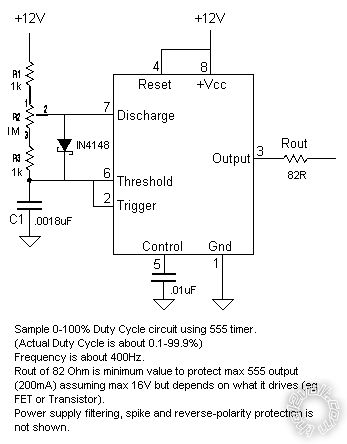dimmer on 65w halogen?
Printed From: the12volt.com
Forum Name: Lights, Neon, LEDs, HIDs
Forum Discription: Under Car Lighting, Strobe Lights, Fog Lights, Headlights, HIDs, DRL, Tail Lights, Brake Lights, Dashboard Lights, WigWag, etc.
URL: https://www.the12volt.com/installbay/forum_posts.asp?tid=126542
Printed Date: November 27, 2025 at 2:41 PM
Topic: dimmer on 65w halogen?
Posted By: cocobutta
Subject: dimmer on 65w halogen?
Date Posted: March 12, 2011 at 8:57 AM
hey guys,
i have a lil project i've started on my '04 altima, which is trying to dim my hi-beams. i'm trying to achieve a day running light, without a day running light module/relay. i would love to connect a 12v dimmer if possible, whether i have to add relays, diodes, hell transistors. whatever i need to make a dimmer work on a pair of halogen bulbs, that'd be fantastic. i've done my searching on here, and here's what i've come across:
https://www.the12volt.com/installbay/forum_posts.asp?tid=63127&tpn=1&PN=1
https://www.the12volt.com/installbay/forum_posts.asp?tid=66594
https://www.the12volt.com/installbay/forum_posts.asp?tid=96005&tpn=1&PN=1
https://alavigne.net/Motorsports/FeatureReports/S2000/DRL/index.jsp
i've gathered all the info my brain can understand from these 4 links, though of course i have some questions of my own.
i just know my basics of electricity. but when it comes to things other than wires, that's where i'm stumped. my dimmer that i would like to use is another nissan dimmer, since i can install it right next to the stock dimmer and would look oem. since this is a gauge/dash dimmer, it has 3 wires. are these 3 wires, 2 grounds and 1 power or vice versa?? after knowing the combination, how should it be wired?
last resort: i would toss the dimmer idea, and just try to decrease the voltage?/current? to the bulbs with some kind of resistor or diode, etc.
thanks in advance!
Replies:
Posted By: cocobutta
Date Posted: March 12, 2011 at 7:23 PM
can anyone help?
Posted By: oldspark
Date Posted: March 12, 2011 at 8:33 PM
They should be treated like LEDs - a chopped constant voltage aka PWM.
Buy commercial {like the Hamsar 45060) ...
or build one (555 PWM to 80A MOSFET)......
 . .
For fixed duty-cycle, can just use 2 resitors instead of adding the pot for adjustability - maybe use a trimpot for some adjustability.
It can be in parallel with a relay (manual or timed as per that Hamsar link) depending on switching arrangment - eg, ground switching if powered from different voltage sources).
Not series - half voltage is way under half brightness, and too cold therefore shortening bulb life.
Same with other dimmers - resistive or analog - no good.
Posted By: cocobutta
Date Posted: March 12, 2011 at 10:15 PM
thanks for your reply olspark.
though i'm having a hard time reading this diagram you've posted, i will take the time to learn how to read it.
so you're saying the dimmer is not a good idea for the sake of the bulb's life span, correct?
Posted By: oldspark
Date Posted: March 13, 2011 at 6:18 AM
A resistive or analog dimmer not good for halogens and doesn't work for LEDs or fluor's etc.
PWM techniques are ok - devices like the Hamsar are.
Posted By: kenaudivw
Date Posted: March 23, 2011 at 4:12 PM
May I piggyback on this discussion?
I also want to add Daytime Running Lights to some older Audi's and VW's by changing or adding running/fog lights that are wired directly to a keyed circuit so that the lights would be on when the key is on. Problem:
1.It would be perfect if I could find a voltage sensitive switch to disconnect the circuit when the voltage drops below 13V, i.e. engine not running. Any ideas?
2. The bulbs that I have in the Fog Lights are H3 (halogen?) that I wanted to wire in series so as to run a reduced wattage. I take it from your reply in this post that this will not work. Its hard to find ordinary incandescent bulbs these days. Any ideas?
-------------
Ken
Posted By: oldspark
Date Posted: March 23, 2011 at 6:58 PM
1. Charge light to sense if engine not running - see UIBI (Ultimate Intelligence Battery Isolator).
Else voltage sensors (see stupid if you have a charge lamp "Smart Battery Isolators" or other low voltage cut-outs and battery protectors), but be aware of voltages dips, battery surface charge etc - ie, the UIBI is the simplest. For voltage sensing - maybe a MW-728 with diodes and a relay to increase its 11.2V cut-out voltage; driving a relay for the lamps (unless powering the PWM).
A 555 can also be used as a voltages sensor, but since 555s typically consume 10mA (even in standby mode) it is not a common or clever application for them.
2. Two halogens in series will be much dimmer than half the normal halogen (halogen output drops much faster than voltage).
Also under-voltage halogens fail quicker because of <whatever> buildups - they need full voltage (or heat?) to prevent this.
Although I'm not sure on the technicalities of build-up, if it's a voltage issue, then PWM should overcome it - eg, see mp3car's Auto brightness with PIC (PWM) and ... (written by a rambler with a grudge!).
If it's a heat thing, then PWM is no different to analog.
Maybe one day I'll find out, but IMO it's over 20 years too late (and I just fitted a thermo-switch for my radiator's 12V cooling fan this year - I've been using the fan for over 30 years!) and since PWM would be used for these high power applications anyhow... (IE - aside from heat problems, the cost of high power resistors is much higher than the 555 & MOSFET circuit.)
|
 .
.